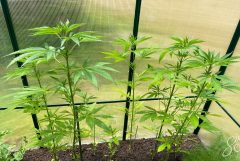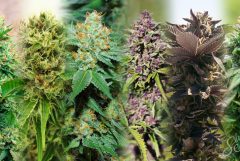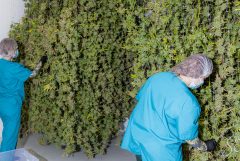The trend of growing cannabis has seen a revitalization as of late. From the first country ever to decriminalize growing weed to what is now a slew of countries following suit, history has shown us that the road to growing and cultivating cannabis has not always been an easy one. Read on to get a glimpse into the history of growing—a history that dates back to 2737 BC!
- How long have people been growing cannabis?
- The spread of weed around the world
- The dawning of medical cannabis
- Growing weed for recreational purposes
- The prohibition of recreational cannabis
- The criminal repercussions of the cannabis ban
- The current state of cannabis in the UK
- The state of cannabis legalization in Europe today
- The growing trend is revived
- Are you interested in growing cannabis yourself?
Recently, the cultivation of cannabis and the cannabis industry, in general, have received a new wave of attention. As more and more countries are either embracing legalization or moving in that direction, growing cannabis has become a hot topic all across the globe.
The global cannabis industry is exploding, and this is just the beginning. Currently, at least 29 countries have legalized its use to some extent, and the global cannabis market is estimated at around $200 billion dollars.
It’s no wonder that growing weed has gained such incredible attention lately, considering that the industry is predicted to boom globally during the next quarter century.
Growing weed may seem like a new trend to the current global population, but its roots go back to ancient civilizations all around the world. Actually, it is probably one of the oldest crops ever recorded.
Read on to learn about the history of growing cannabis. The facts might surprise you!
How long have people been growing cannabis?
The oldest written record to refer to cannabis use dates back to 2737 BC. Cannabis was first featured in the writings of Chinese Emperor Shen Nung, who recorded its medicinal value in cases of rheumatism, gout, malaria, and absent-mindedness. He also mentioned its psychoactive properties, but that was a far second to his mention of its medical properties.
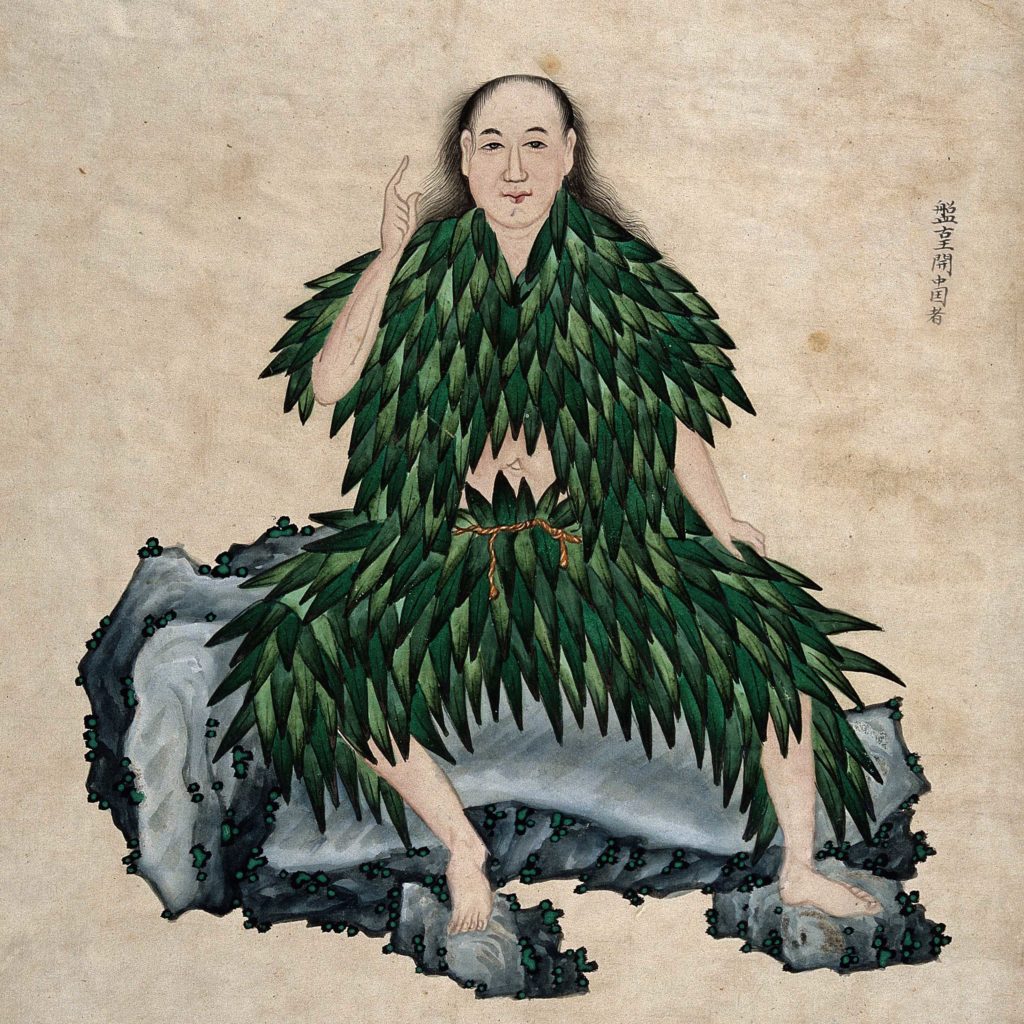
Burned cannabis seeds have been found in the graves of shamans from China and Siberia, dating back to 500 BC.
Ancient Greeks and Romans reportedly used cannabis as well.
In the Middle East, cannabis spread throughout the Islamic Empire, eventually making its way to North Africa. In India, it was common to use weed recreationally. This is believed to be in part because the Koran banned the use of alcohol.
During the 12th century, the Muslims introduced hashish, the most potent form of cannabis, to Persia and North Africa, where its popularity spread. Today, the Middle East, North Africa, Pakistan and Afghanistan are the main sources of the distribution of hashish.
The spread of weed around the world
The rise of growing cannabis originated in Central Asia and was then introduced to Africa, Europe and eventually the Americas. Cannabis quickly became popular because of the many uses of hemp. Hemp was used for making rope, sails, paper, and clothing, and the seeds were used for food.
The oldest record of cannabis in Britain is traced back to a 10th century Viking settlement. It is presumed since it was popular in the coastal areas that cannabis was first cultivated for hemp. It provided a much stronger alternative to the other resources that were being used at this time for clothing, rope, canvas and fishing nets.
In 1533, King Henry VIII began to require farmers to grow the crop after hemp was credited for aiding in the success of the English Navy. Later, Queen Elizabeth I would enforce even stricter regulations on the farmers to grow cannabis. She also increased the quota for the amount that they were required to grow.
In the mid-1500’s the Spanish brought cannabis to America. By the 1600’s, farmers were growing cannabis as required by law. However, hemp derived of cannabis has very low levels of the cannabinoid THC and is known to be non-psychoactive.
By the 1890’s the hemp crops had been widely replaced by cotton in the United States. Although by this time, the use of cannabis-derived weed had begun to spread.
Today, however, there has been a revival of growing cannabis-derived hemp.
The dawning of medical cannabis
In the 1830’s the medicinal properties were being studied by an Irish doctor who resided in India at the time. Sir William Brooke O’Shaughnessy was the doctor who found that cannabis extracts were beneficial in treating stomach pain and vomiting in patients suffering from cholera.
While many ancient civilizations are believed to have used cannabis for its medicinal abilities, this was the first time it was recorded by a modern Western World physician as an option for treatment.
When Sir Willian Brooke O’Shaughnessy returned to Britain in 1843, he brought with him some of the cannabis he had found to benefit cholera patients. By the late 1800’s European and American pharmacies sold cannabis extracts to treat various illnesses.
Scientists would later discover the medicinal value of THC, the psychoactive compound in cannabis, as a way to treat nausea and boost patients’ appetites.
The United States Pharmacopeia listed cannabis from 1850 until 1942 as a treatment prescribed to treat labour pains, nausea, and rheumatism, among other things. It was also commonly used for recreational purposes until the 1930’s.
During this time, opium and cocaine were also widely used for both medical and recreational purposes.
Growing weed for recreational purposes
Sometime in 400 BC, the ancient Greek historian Herodotus recorded that the Iranian nomads from Central Asia, known as the Scythians, would inhale the smoke from burning cannabis seeds and flowers.
Around 800 AD, the more purified form of cannabis known as hashish was popularly smoked in a pipe throughout Asia and the Middle East. As Islam grew, so did the popularity of hashish as a recreational drug.
By the 1800’s, even before O’Shaughnessy would return to Britain, it had become popular to use weed recreationally for its psychoactive qualities. This was especially the case in the newly acquired territories such as those in South Africa and Southern Asia.
The use of cannabis for recreational purposes spread to other areas of Britain throughout the 1800’s. Sometime around 1840-1850, during a British rule of India and Jamaica, the indentured servants from India would introduce the crop to the Jamaicans.
Since its introduction, Jamaica has become known for its cannabis culture. Many of the terms that are so widely used there regarding cannabis, including the term ganja, are derived from the Indian speaking culture.
In the United States, weed as a recreational drug did not become popular until the early 1900s. During the Mexican Revolution, the Mexican immigrants introduced their practice of smoking weed to the Americans.
The prohibition of recreational cannabis
The prohibition of cannabis in the United States coincided closely with the extremely harsh period of the Great Depression. During this time, Americans faced problems of severe unemployment and social conflict.
Fear began to spread during the period of the Great Depression. Americans began to associate weed as “evil weed” brought to the US by the Mexicans, who had earned considerable resentment.
By 1931, 29 of the United States had banned the use of cannabis, along with many other intoxicants. By the time weed arrived in America, many countries in Britain had already begun prohibiting its recreational use.
There were several attempts to ban cannabis during the 1800s that were thwarted. In British India, attempts were made in 1838, 1871, and 1877. None of these attempts turned out to be successful.
In 1894 the British Indian Drug Commission found that “little injury” could come from using cannabis. However, it wasn’t long until other British colonies began to successfully enact prohibition laws. It began with Jamaica in 1913, Sierra Leone in 1920 and South Africa in 1922.
In the main country of Britain, the prohibition came just before the prohibition in America. In 1928 the United Kingdom banned the use of cannabis and added it to the list of Dangerous Drugs Act of 1920.
The criminal repercussions of the cannabis ban
Initially, in the UK, cannabis was viewed as a racial issue. Many associated the crop with black seamen and theatrical performers.
In 1960, there were just 230 arrests related to cannabis. That number grew to reach almost 5000 by the end of the decade. By 1973 there were over 11,000 arrests made related to cannabis production, use or sales.
With the rising number of arrests and the rising costs within the court system, some advocated for the decriminalization of the plant. In March of 2014, cannabis-related offenses accounted for over 60% of Britain’s arrests and police reports.
However, it was not until very recently that lawmakers began to look at the possibilities of legalizing growing and using cannabis.
Many have advocated for its medicinal value, while others simply believe that prohibition does more harm than good. Some advocate its recreational use is preferable and safer than the legal alternative, alcohol.
In some areas growing cannabis for personal use is now legal. Many people can see value in its potential as a future cash crop.
The current state of cannabis in the UK
With the number of countries jumping on board to legalize cannabis in some form, many people have begun to wonder how beneficial prohibition really is.
Cannabis has continued to be popular recreationally in Britain, albeit illegal. Currently, there are almost 30 countries around the world who have legalized cannabis to some extent.
Additionally, over half of the United States now allows some forms of cannabis to be used by citizens, and many places have allowed individuals to grow the plants.
In May 2017, a doctor approved the first medical prescription ever to be written in the UK. Even though it’s still illegal, the doctor wrote the prescription to an 11-year-old boy who suffers from extreme epilepsy.
Many advocacy and government groups are calling for legalization. This includes the MS Society, major Democratic groups, as well as members of the Parliament.
Currently, police are no longer expected to launch extensive investigations into those who found to be growing weed. Instead, they are leaving polite notes for growers.
While regulatory limits remain in place on cannabis, it’s becoming more and more acceptable. Many activists, government officials, police, medical professionals and others rally for its legalization in the UK.
It appears that it is becoming more common to ignore those who grow the plants, as well as those found in possession. This seems to be even truer in the cases where crops are minimal and used for personal use and even some United States police dogs are reportedly now being trained to ignore the smell of cannabis plants.
Many believe that complete decriminalization may be just around the corner. The Liberal Democrats announced a campaign promise for the total legalization of cannabis for adult use. This is the first time that anything of this nature has been used as part of a political platform in Britain.
Long-time Parliament member, 82-year-old Paul Flynn, who claims to have never used cannabis, called on citizens to openly consume cannabis in front of the Parliament as a form of protest against the country’s drug policy.
As the world looks on, tensions rise and voices of protest become louder, people continue to wonder in suspense what will be the next move regarding cannabis in the UK.
The state of cannabis legalization in Europe today
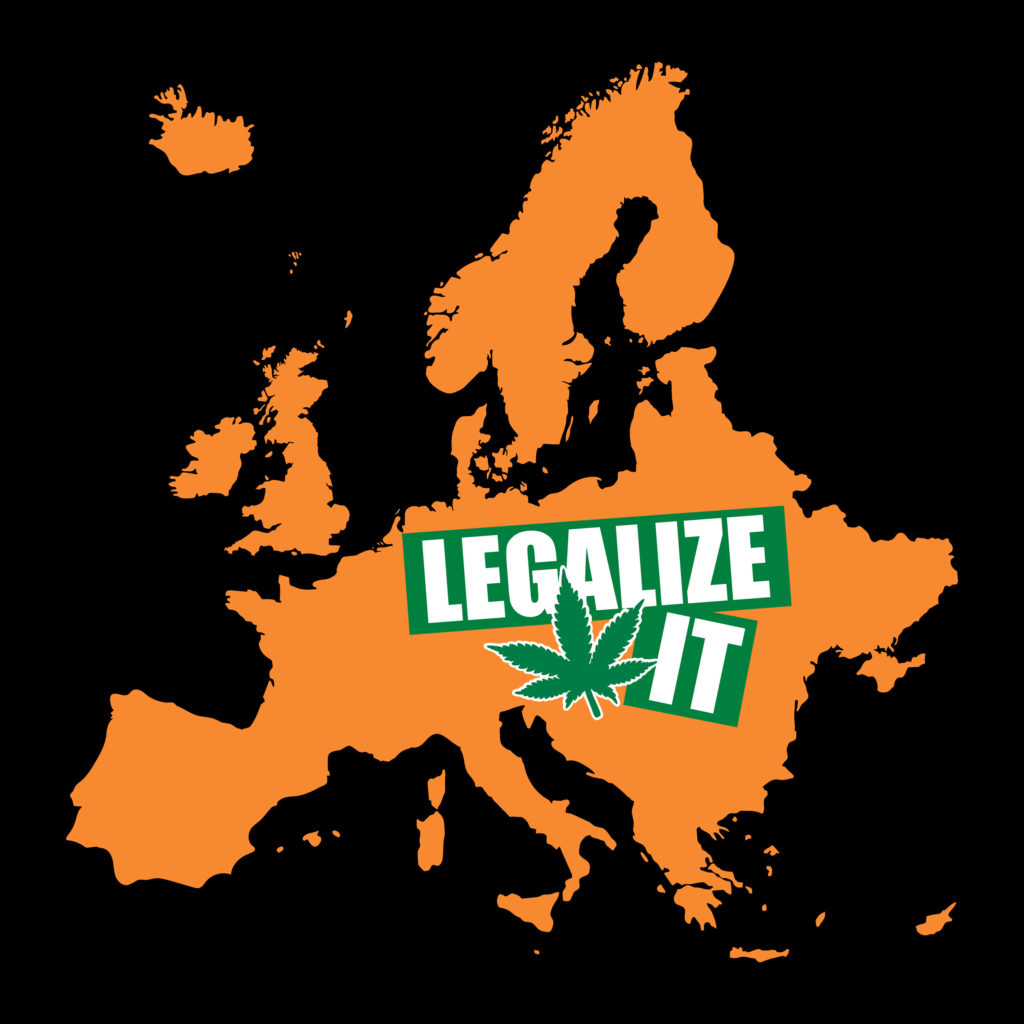
In Europe, the climate for legalization appears to have ripened somewhat. In a recent poll, 80% of the people in France believe that punitive ramifications on cannabis are not necessary.
Some of the European countries have begun paving the way for more major countries to decriminalize the use and cultivation of cannabis:
- In Spain, for example, growing cannabis on personal property for adult consumption is decriminalized, but not yet legalized.
- In Portugal, Italy, Romania and the Netherlands, cannabis has been decriminalized. In Germany, it is allowed with permission, although permission is rarely granted.
- France is now in the hot seat, where 700,000 people consume cannabis daily and 1.4 million smoke at least two joints per month.
The growing trend is revived
Uruguay became the first country ever to decriminalize growing cannabis. The Uruguayan government intended to oversee its growth and distribution.
Under Uruguay’s current law, citizens are allowed to buy up to 40 grams from the government per year. Cultivators can grow up to six crops, totalling no more than 480 grams. And, the country’s “smoking clubs” are allowed to have 99 plants at a given time.
Several states in the US now allow adults to grow cannabis (under varying conditions), namely Alaska, California, Colorado, Maine, Massachusetts, Washington DC, Nevada and Oregon. Even more states allow medical cannabis patients to grow their own cannabis.
In the Netherlands, the Public Prosecution Service does not prosecute cannabis for personal use of up to five grams, or up to five plants. While growing cannabis is not legalized, anyone who is found to be growing up to five plants for personal consumption will not be prosecuted. If more than five plants are seized from an individual, the prosecution may be sought.
More countries followed suit, legalizing growing cannabis to some degree, usually starting with medical cannabis patients.
Are you interested in growing cannabis yourself?
There are many benefits to growing your own cannabis compared to buying it from a store or dispensary. If you’re considering doing that, you’re at the right place! We provide you with everything you need to know on our blog, and if you’re ready to start growing, you should take a look at our cheap cannabis seeds.







